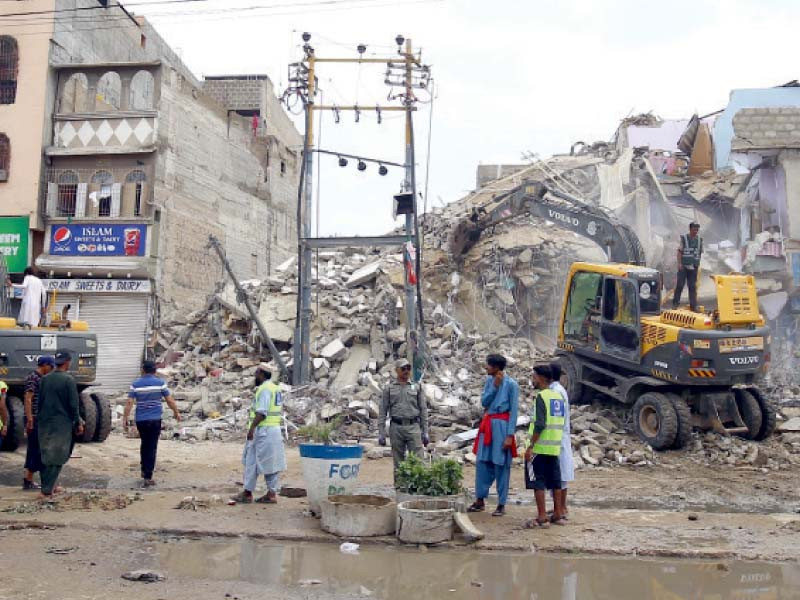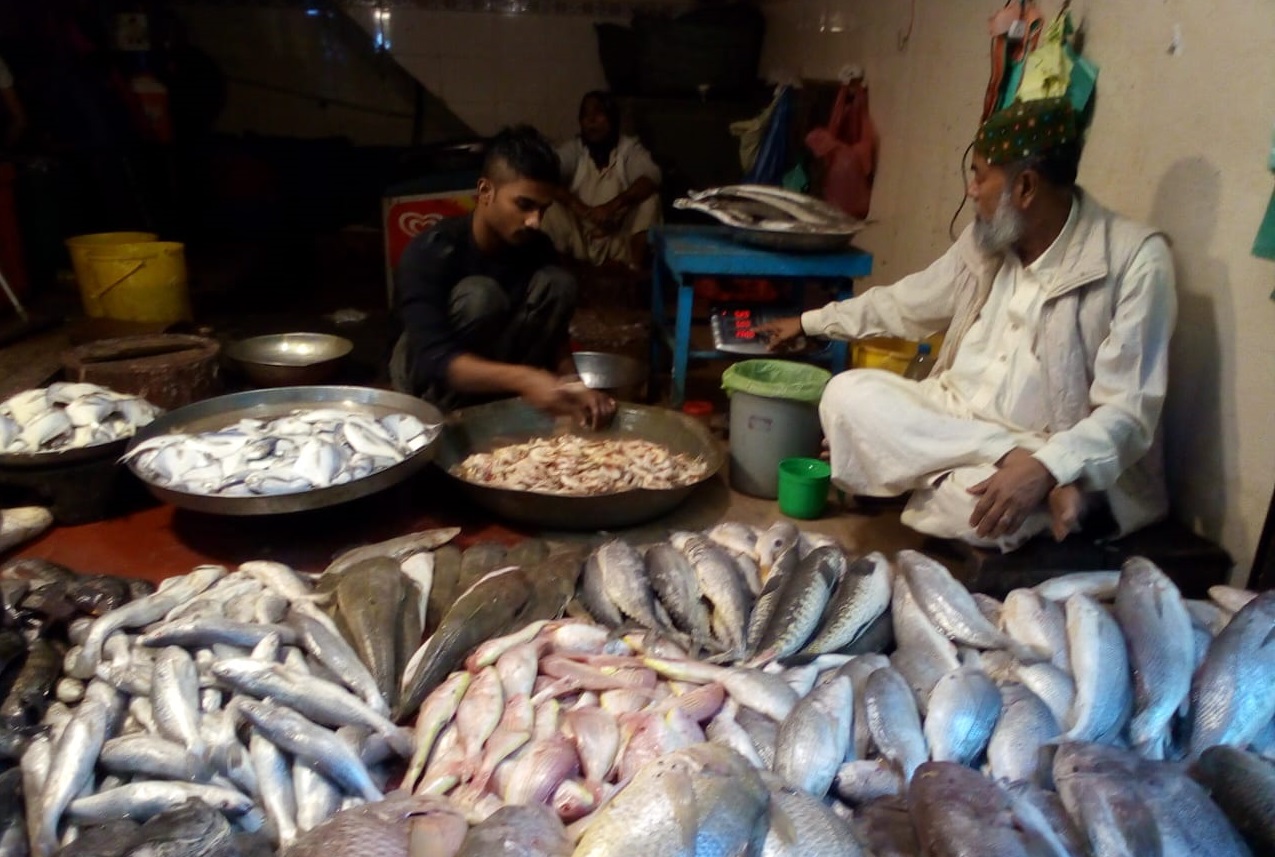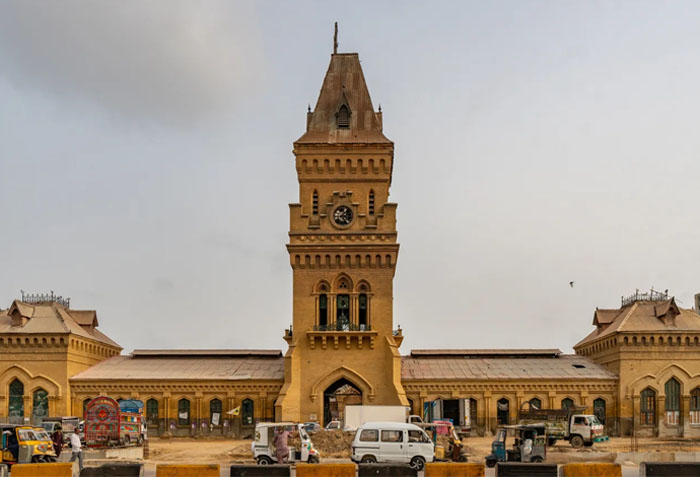When Karachi was still called Kolachi, the air in Moosa Colony carried the soft melodies of Mohammad Rafi, Lata Mangeshkar, and the soulful ghazals of Mehdi Hassan echoing from old tea stalls and paan kiosks. Then, as now, life here never slept. The colony’s nights are alive with laughter — elders chatting on street corners, youngsters sharing jokes, and children running freely through narrow lanes. Even today, one can see elderly men playing cards under dim streetlights while old songs hum in the background — the same tunes that once gave rhythm to post-Partition Karachi.
A Colony Born of Migration and Resilience
At the heart of Moosa Colony stands Jhammu Chowk — also known as Khawaja Ghareeb Nawaz Chowk — a name that recalls the days when migrants arrived in Pakistan after the partition in 1947, leaving behind their homes and memories. These were people who had sacrificed everything — homes, property, even loved ones — to build a new life in a new nation. Karachi, the first capital of Pakistan, became their destination of hope. Refugees from UP, Delhi, Lucknow, and Hyderabad (Deccan) chose Karachi because it offered better prospects and the promise of livelihood.
The story of how Moosa Colony got its name is both tragic and inspiring. In 1969, thousands of refugee families were living in makeshift huts near the Teen Hatti Bridge. One day, a sudden flood swept away their homes and all their belongings. Many lives were lost. As the news spread across radio stations, then-Governor of West Pakistan, General Muhammad Moosa, took notice of the disaster. With the help of the Sindh Government, he arranged for the displaced families to be resettled in the area that would later be called Moosa Colony.
When General Moosa visited the site by helicopter — the same area where APWA College now stands — it was nothing more than an open field filled with exhausted and homeless families. He comforted them in his address, promising that they would rebuild. In gratitude, the new settlers named their community Moosa Colony after him — a tribute to compassion and leadership.
Karachi’s Oldest Fish Market — A 50-Year Tradition
For over five decades, Moosa Colony has been home to one of Karachi’s oldest and busiest fish markets. More than 50 small shops operate here, selling a wide range of seafood — from pomfret, rohu, and hilsa to prawns, crabs, and lobsters. Fishermen bring fresh catches daily from the Karachi Fish Harbour, delivering between five to ten truckloads every day. Customers come not only from nearby Federal B Area and North Nazimabad but from across the city and beyond.
The market offers fish at prices lower than most parts of Karachi, yet the quality remains remarkably high. That’s why not just ordinary residents but also restaurant owners, caterers, and vendors prefer to buy from here. On average, about six tons of fish are sold in Moosa Colony each day — a testament to the area’s enduring role in Karachi’s culinary life.
A Melting Pot of Communities

When the first settlers arrived from Teen Hatti, the population barely reached ten thousand. Today, it exceeds 150,000, representing a vibrant mix of languages and ethnicities. About 40% of residents belong to the Bengali community. During the era of President Ayub Khan, the Federal Government announced new housing schemes, including flats for low-income families, which brought Moosa Colony into the fold of the Federal B Area.
In its early days, the colony was wide and open, dotted with kikar and ber trees. People kept livestock, and neighbors shared one another’s joys and sorrows. Entertainment was simple but communal — families gathered to watch films projected on makeshift screens, often during weddings or festive occasions. These gatherings became a cherished tradition, bringing color and cheer to the newly settled community.
From Simplicity to Struggle
Once upon a time, Karachi’s streets were safe enough for a traveler to sleep on the footpath without fear. No one dared steal. Today, the situation is tragically different. Poverty and insecurity have crept in. Moosa Colony now reflects the struggles of urban Karachi — overcrowded homes, lack of education, and economic hardship. Many women here work as domestic helpers in nearby neighborhoods to support their families.
Despite these challenges, the sense of identity and resilience remains. The same colony that began as a refugee settlement has grown into a diverse urban community. It may lack glamour, but its soul is unmistakably Karachi’s — hardworking, restless, and alive.
The Changing Face of Moosa Colony
Decades ago, the Gujjar Nala flowing beside the colony was so clean that its waters sparkled like pearls. Today, the drain is clogged with garbage — a symbol of urban neglect. Yet, amid decay, life goes on. Small shops, mosques, fish stalls, and street vendors keep the area buzzing from dawn till midnight.
The colony’s evolution mirrors that of Karachi itself — from promise to pressure, from simplicity to survival. Here, every corner tells a story — of migration, adaptation, and endurance. Even the old men playing cards at Jhammu Chowk and the children laughing in the alleyways are silent witnesses to a 50-year journey of struggle and hope.
Legacy of General Moosa
Few may remember the man whose name the colony carries, but his gesture of kindness lives on in the collective memory of its people. General Moosa’s intervention gave shelter to hundreds of families when they had nowhere else to go. Every brick of Moosa Colony, every home that stands there today, is part of that legacy.
Conclusion
From the melodies of Rafi and Lata to the bustling cries of the fish market, Moosa Colony captures the timeless spirit of Karachi — a city built by migrants, defined by resilience, and sustained by dreams. Though its streets may be worn and its residents often struggle, the heart of Moosa Colony still beats with the rhythm of survival and hope.
Rao Imran Suleman is a senior analyst and researcher from Karachi. With a deep interest in Pakistan’s urban history and migration stories, he focuses on capturing the cultural, social, and historical evolution of Karachi’s neighborhoods and communities.



